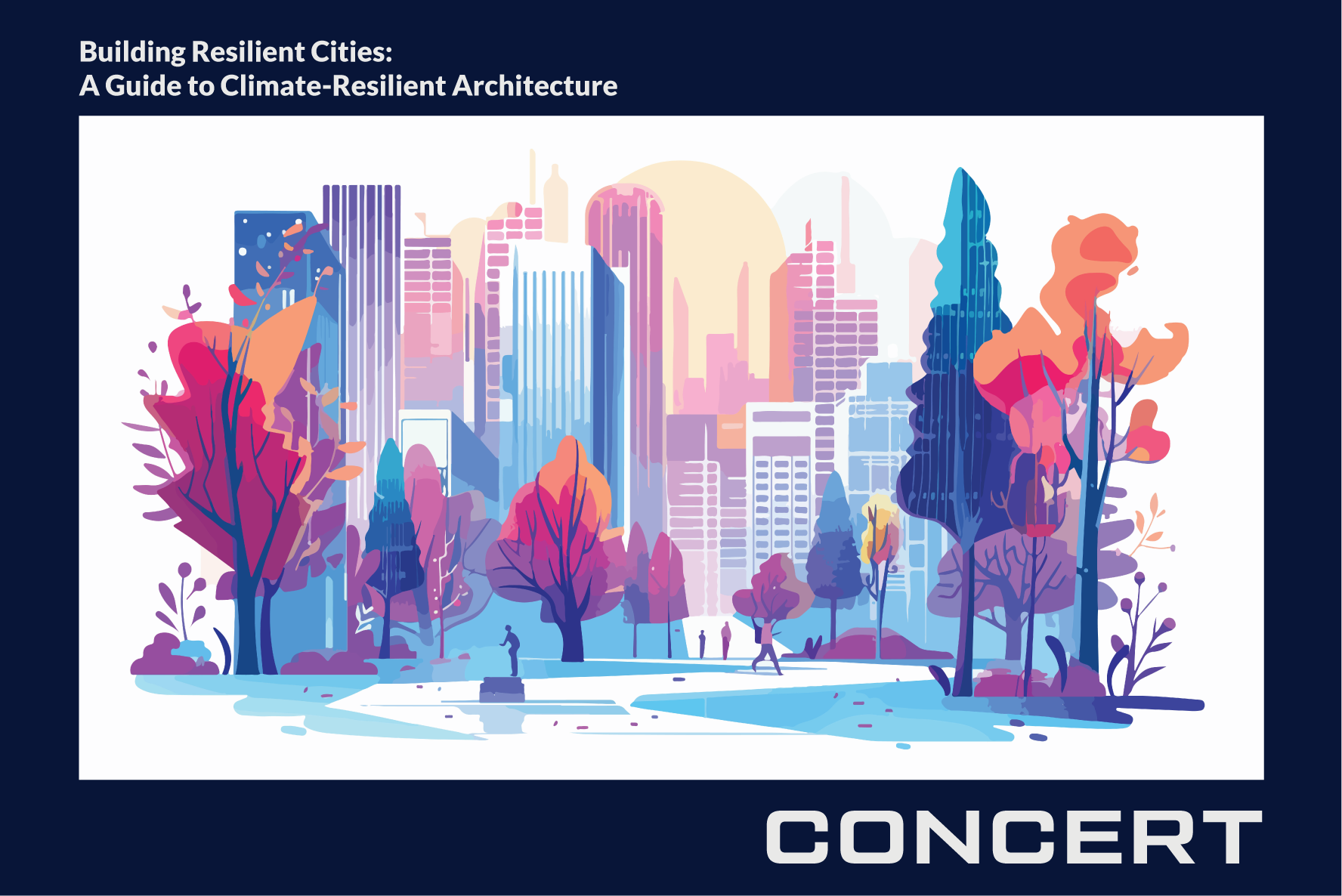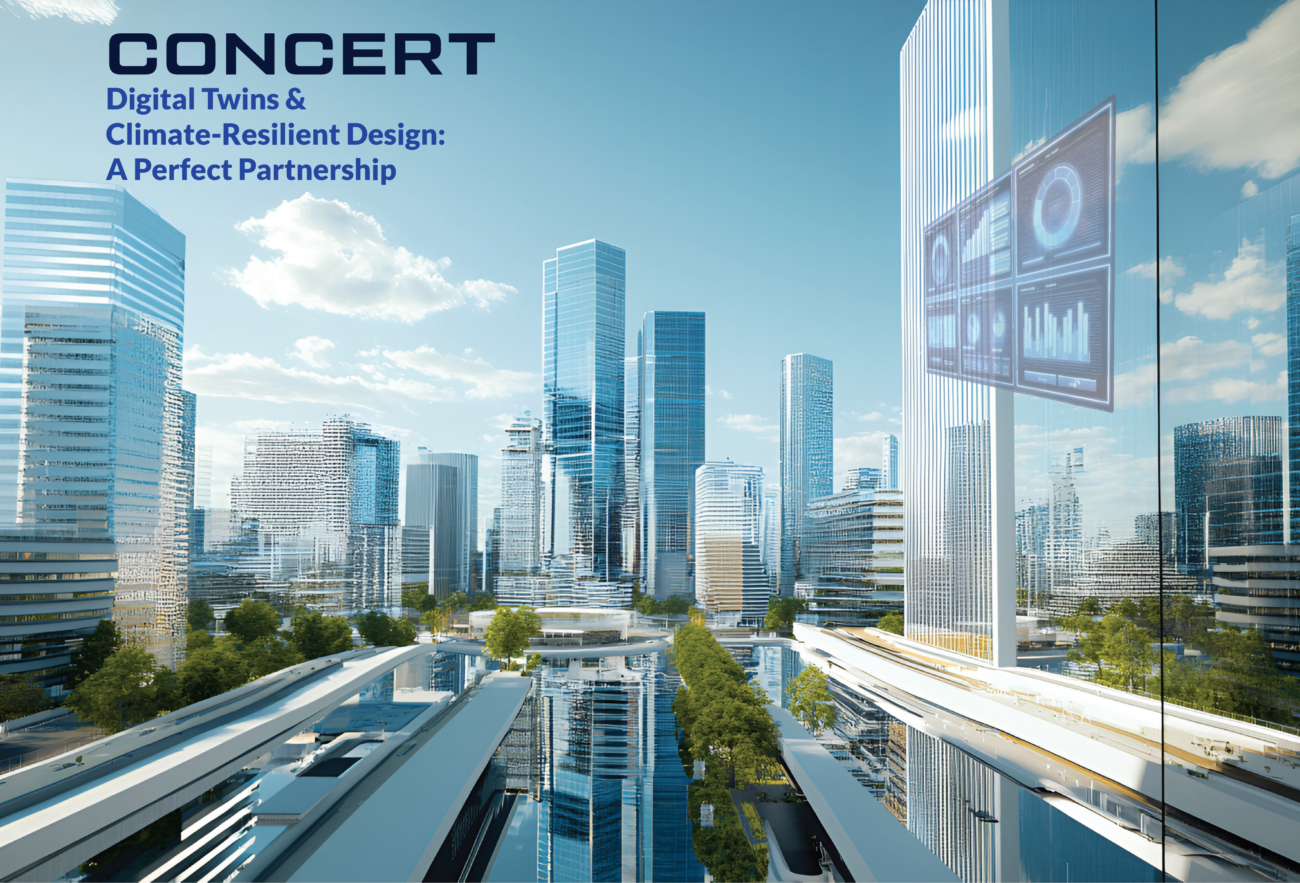Building resilient cities must be a priority in design as architects and urban planners look toward the future. Climate-resilient architecture prepares cities for environmental challenges and ensures sustainable growth in an era of climate uncertainty. Resilient cities create buildings and urban areas that withstand, adapt to, and recover from climate-related events. Many AECO professionals already use tools like soil sample reports and climate zone data. However, true resilience requires going beyond this conventional understanding of site data. Architects must integrate advanced technology, real-time data, and sustainable practices that will address evolving environmental risks.
Resilient Cities Integrate Real-Time Data
IoT (Internet of Things) is transforming how cities understand and prepare for climate events. Real-time data collection allows architects to design structures that respond dynamically to environmental shifts. For example, Songdo Smart City in South Korea tracks air quality, energy use, and traffic patterns through sensors embedded throughout the city. This continuous data stream enhances daily life by optimizing energy use and reducing pollution. More importantly, during emergencies like floods or heat waves, real-time data enables quick, data-informed decision-making for more efficient evacuation routes and allows for better resource allocation. Integrating such data during the design phase helps architects anticipate risks and create adaptable structures.
Accurate AECO Workflows
Precision in workflows ensures that sustainability goals are achieved throughout a project’s lifecycle. Reliable data-sharing platforms like Concert enable seamless collaboration between architects, engineers, and contractors. This collaboration reduces errors, prevents resource waste, and ensures that climate resilience is not compromised during construction. One Central Park in Sydney is a testament to this approach. Its green wall, designed to reduce heat absorption and improve air quality, was possible due to precise coordination among stakeholders. The project’s adaptive energy systems, which respond to weather changes, highlight how accurate workflows can produce both aesthetically pleasing and environmentally resilient structures.
Innovative Materials
The choice of building materials significantly affects a project’s resilience. Sustainable materials not only lower environmental impact but also enhance durability and adaptability. The Bullitt Center in Seattle exemplifies this with its use of low-carbon concrete, FSC-certified wood, and rainwater harvesting systems. Environmental benefits and resilience under changing climate conditions informed the selection of materials. For instance, the building’s wooden frame provides both strength and flexibility, making it more adaptable to environmental stresses like earthquakes or temperature fluctuations.
Digital Twins
The expansion of digital modeling now provides architects with a virtual sandbox to test their designs under various climate scenarios. These digital replicas, referred to as digital twins, allow simulations of floods, high winds, and extreme temperatures, enabling architects to refine designs before breaking ground. Singapore’s Virtual Singapore project demonstrates this capability on a city-wide scale. Planners use this 3D digital model to visualize flood risks, manage urban heat, and optimize wind flow between buildings. For architects, digital twins represent an invaluable tool to ensure their designs are not only innovative but also resilient to climate threats.
Resilient Cities Balance Innovation with Practicality
While innovation drives the push for climate resilience, practical implementation ensures its success. The HafenCity project in Hamburg, Germany, exemplifies this balance. Elevated buildings protect against rising sea levels, while adaptable spaces accommodate various uses, making the project both functional and resilient. Its integrated drainage systems prevent flooding during heavy rains, showcasing how innovative design can be grounded in practical solutions that are cost-effective and scalable.
By embracing these components—real-time climate data, accurate workflows, sustainable materials, digital twins, and practical innovation—architects can lead the charge in creating resilient cities. Platforms like Concert support this mission by providing the tools needed to ensure accuracy, collaboration, and sustainability in every phase of a project.





